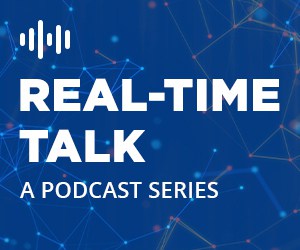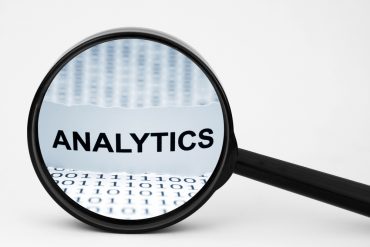
Employing Industrial DataOps can help asset-heavy organizations create digital twins, which, in turn, can help organizations move APM into new domains, including the performance and sustainability aspects of their operations.
The way companies utilize asset performance management (APM) is undergoing a transition. Once used primarily for asset maintenance and reliability, APM is now also being applied to address performance and operational efficiency issues. The expanded role of APM brings additional benefits. But to achieve success, organizations often need to adopt more sophisticated approaches, particularly ones based on digital twins.
Quite tellingly, that is the plural “twins,” meaning rather than one digital twin being used for one physical asset, there needs to be a collection of digital twins that represent various interrelated elements that impact the overall operations of the organization. To that point, in a Verdantix global corporate study on the APM market, 62% of the 256 respondents stated that improving process optimization and lean operations was a high priority for their firm over the next 12 months.
And therein lies the challenge many organizations face when trying to move up the APM scale. Many systems and the data they produce or use are siloed. That makes it hard to ensure every group, every operational area, and every digital twin has the data it needs. Enter DataOps, a data management practice focused on improving the communication, integration, and automation of data flows between data managers and data consumers across an organization.
Not your father’s APM
Gartner defines APM as an approach that “encompasses the capabilities of data capture, integration, visualization, and analytics tied together for the explicit purpose of improving the reliability and availability of physical assets.”
And for years, APM has helped organizations improve the performance and uptime of specific assets. It played a critical role in asset-heavy industries, including manufacturing, utilities, energy production, automotive, and more.
But there is a new realization emerging that merely implementing APM software and digitizing existing processes will not likely improve core operations and deliver the financial results that executive leaders desire (and investors demand). According to Deloitte, “this seems to reveal a pervasive and narrow view of APM that may miss the connection between asset performance, broader maintenance, operations improvements, and safety.”
See also: “Googling” Your Industrial Data: Fixing Search for SMEs
One reason that the narrow view persists is that for many companies, maintenance, operations, and safety and compliance organizations function in silos. And worse, they may even have conflicting goals and motivations.
But that attitude is changing. While minimizing asset downtime and maximizing production and quality remain important, other objectives are becoming important. For example, many industrial companies are relying on asset performance management (APM) software to improve operational efficiencies. Such capabilities have become critical to meet the challenges of volatile market demands and recent supply chain disruptions.
Embracing this form of APM can help organizations:
- Reduce maintenance-related costs to improve efficiency and performance.
- Achieve their digital transformation objectives.
- Tackle the challenges associated with increasing failure and risk complexities.
As Deloitte notes, “perhaps the most transformative aspect of this new form of APM is how it can connect systems across the business, from enterprise resource planning (ERP) to safety and quality, to inventory management.”
So, what’s holding organizations back from moving to this more encompassing form of APM? Many companies cannot connect APM with other technologies and data in their enterprise-wide digital networks to harness its full value.
See also: Digital Twins, IT/OT Convergence Drive the Industrial Internet
The need for DataOps and digital twins
Two key technologies that can help are DataOps and digital twins.
DataOps
Let’s start with DataOps. For modern APM to succeed, organizations need to focus on data transparency throughout the organization. They need the ability for data to flow through the organization so that optimal decisions can be made.
That is a perfect fit for DataOps. According to Gartner, DataOps should use technology to automate the design, deployment, and management of data delivery with appropriate levels of governance, and it uses metadata to improve the usability and value of data in a dynamic environment.
That is a good starting point. More is needed for advanced APM use cases. Specifically, what’s needed is what some are calling Industrial DataOps, which is about breaking down silos and optimizing the broad availability and usability of data generated in asset-heavy industries.
The convergence of data and analytics has made Industrial DataOps an operational necessity. But the data requires context if it is to be used broadly by different groups and functional areas within and across an organization. To help in that area, a suitable DataOps solution must automate data processes and create one central, contextualized source of truth.
Digital twins
APM has digital twin technology at its core. They serve data in a way that matches operational decisions that are to be made. For advanced APM applications, organizations need multiple digital twins, as the type and nature of decisions for each aspect of operations are different.
Specifically, what many are realizing is that a single digital twin cannot do all that is required. Industrial companies need multiple digital twins and an efficient way of populating all the different kinds of digital twins with data in a scalable way. Industrial DataOps can provide the data backbone for such digital twin creation and management.
In particular, DataOps can help with one of the most challenging aspects of supporting numerous digital twins. For success, digital twins must easily integrate all industrial data, provide simple access to this data, and accelerate the deployment and scaling of solutions.
Increasingly, organizations are turning to an open industrial digital twin model that aggregates of all possible data types and data sets, both historical and real-time, directly or indirectly related to a given physical asset or set of assets in an easily accessible, unified location.
A final word
Employing Industrial DataOps helps asset-heavy organizations create digital twins. That, in turn, can help organizations apply APM in innovative ways to do more than address maintenance issues and move into other domains, including performance and operational efficiency aspects of their operations.







